Why use Green shores?
Nature-based vs. hard armour shoreline designs
Green Shores uses nature-based shoreline designs to protect shoreline property and provide benefits for people, wildlife, and the environment. Green Shores is also more cost-effective and resilient to climate change and sea-level rise than hard armouring solutions. Conventional hard amour approaches such as bulkheads and seawalls disrupt natural shoreline functions, which can worsen erosion and degrade the shoreline.
Green Shores provides many benefits. These are described below.
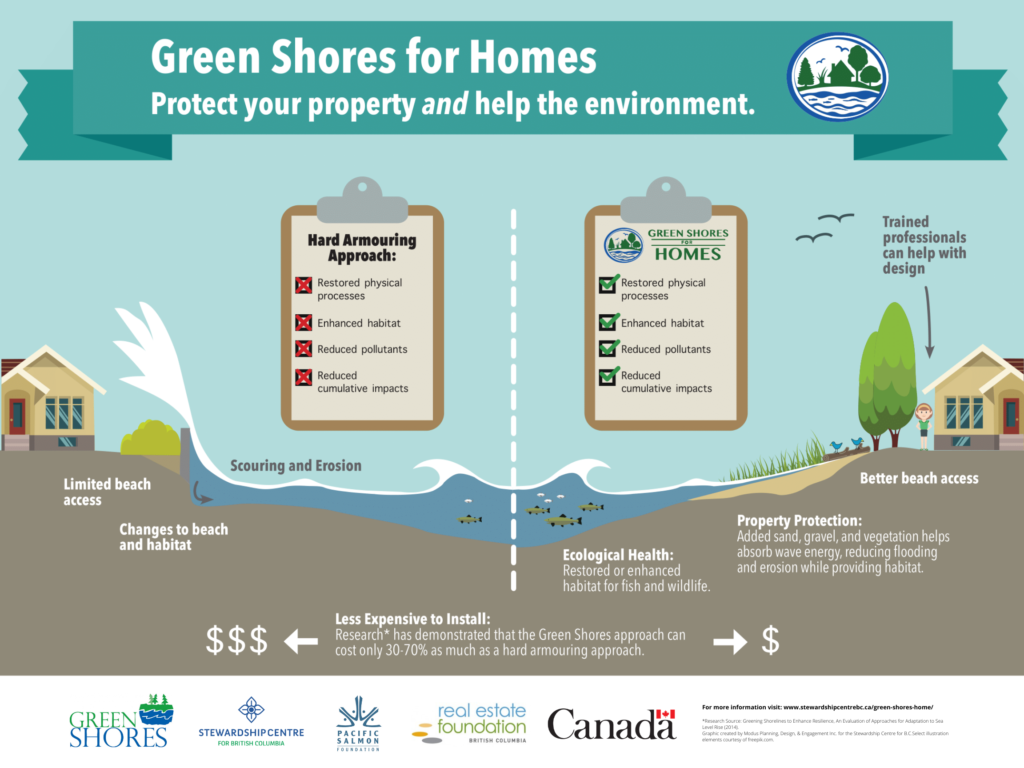
Physical processes
Green Shores restores physical processes promoting the natural movement of water and sediment that maintain healthy shorelines. Green Shores also protects shorelines from erosion and flooding through soft shore protection, which includes re-sloping, beach nourishment, placement of large woody materials, and planting of riparian vegetation.
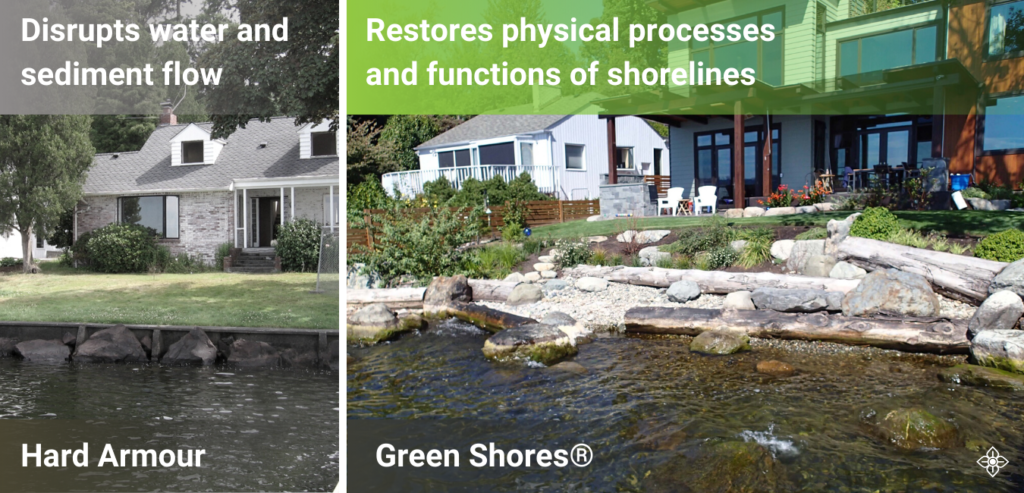
Source: Lake Washington, Green Shores for Homes project.
Habitat and biodiversity
Green Shores provides more suitable habitat for aquatic and terrestrial insects, plants, birds, fish, and other wildlife, increasing the overall biodiversity of the shoreline. Green Shores incorporates native vegetation that is better adapted to shoreline conditions and does not require irrigation or chemical fertilizers. This vegetation provides better food and shelter for native fish and other wildlife while also preventing erosion.
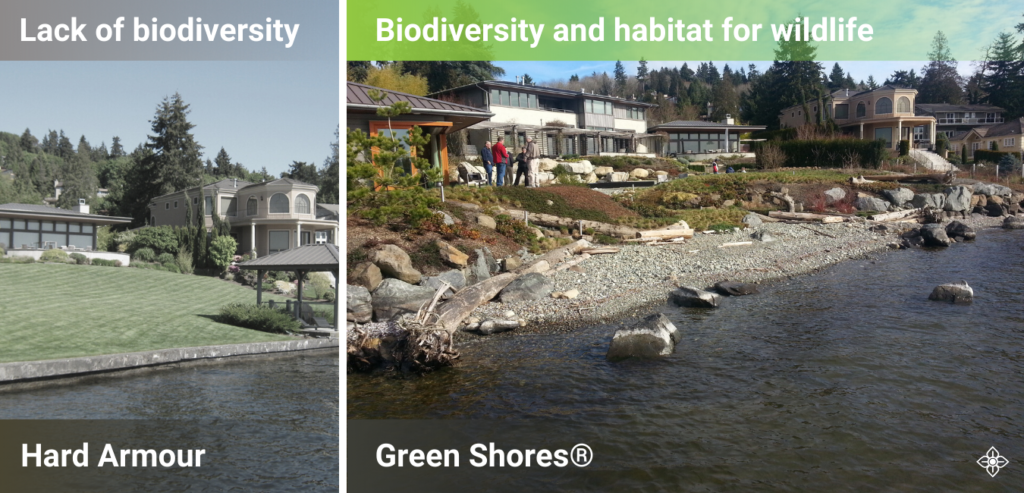
Source: East Shore Lake Washington Residence, Green Shores for Homes project.
Cost-effective
Green Shores and other nature-based, soft alternative shorelines solutions can be 35-70% cheaper to install and maintain than hard alternatives (bulkheads, seawalls) (Green Shores 2020: Impact, Value and Lessons Learned, ESSA). Additionally, Green Shores projects achieve high returns on investment and provide important environmental and societal benefits. For example, previous analysis suggests that each $1 invested in Green Shores for Shoreline Development (GSSD) program delivery generated $7.10 in social benefit in BC, which is a 1:7 cost-benefit ratio (ESSA).
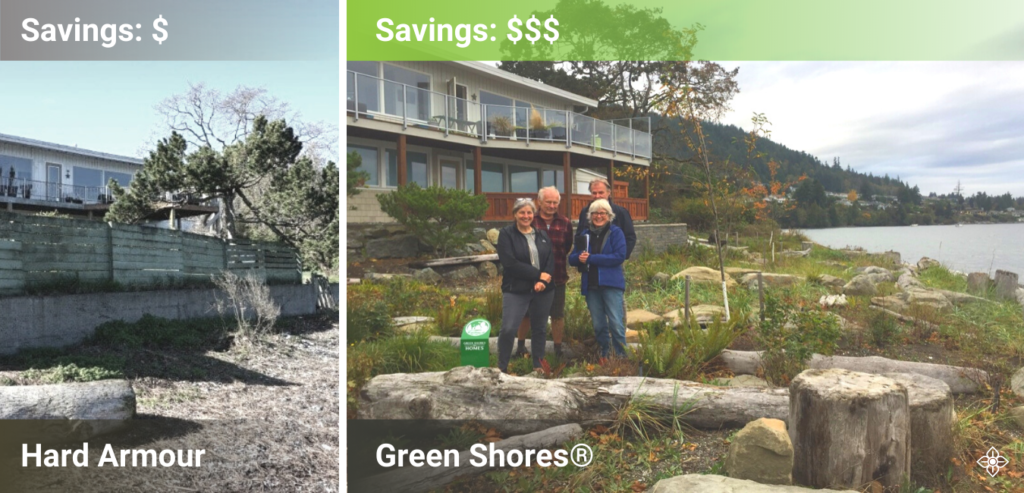
Source: Piper’s Lagoon, Green Shores for Homes project.
Free of contaminants and pollutants
Green Shores prevents and reduces pollutants from entering the aquatic environment. Hard armour structures may introduce toxic compounds and pollutants (such as creosote-treated bulkheads or dock pilings) into aquatic environments. Replacing hard armouring with soft shore approaches such as gravel, logs and vegetation helps to filter water and reduce pollutants from entering aquatic environments. Other Green Shores nature-based approaches include reducing run-off from the upland through reducing impervious surfaces. This also helps to reduce the potential for pollutants to end up on the shoreline.
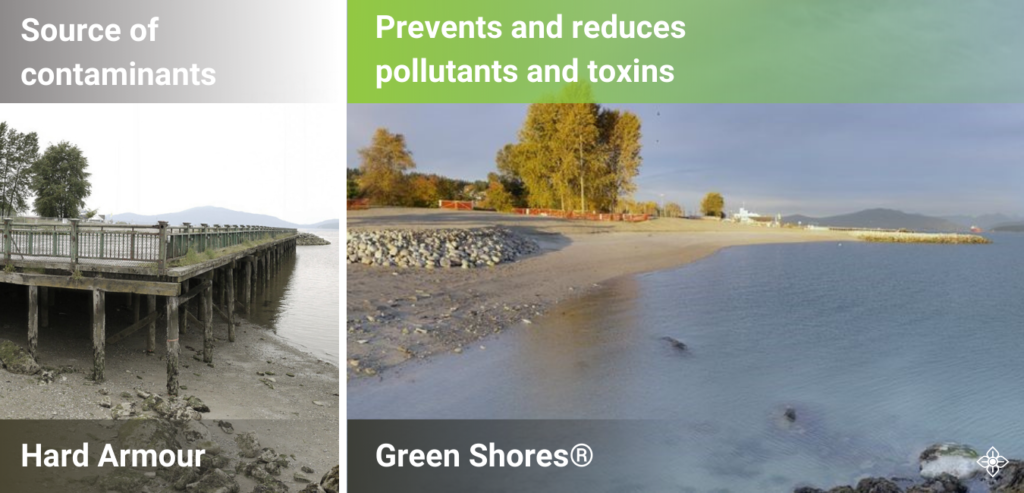
Source: Jericho Beach Park, Green Shores for Shoreline Development project. Photos by Nick Page, Raincoast Applied Ecology.
Habitat for Salmon
Green Shores provides spawning habitat for salmon and natural cover for juvenile salmonids using a network of branches, trunks, stems, and roots. Additionally, overhanging vegetation provides important organic input to the aquatic environments that juvenile chinook salmon feed on. On the other hand, bulkheads, seawalls, and other hard armour approaches do not support fish habitat and instead disrupt food chains and migration paths and contribute to ‘coastal squeeze’ – the serious loss of intertidal habitat.
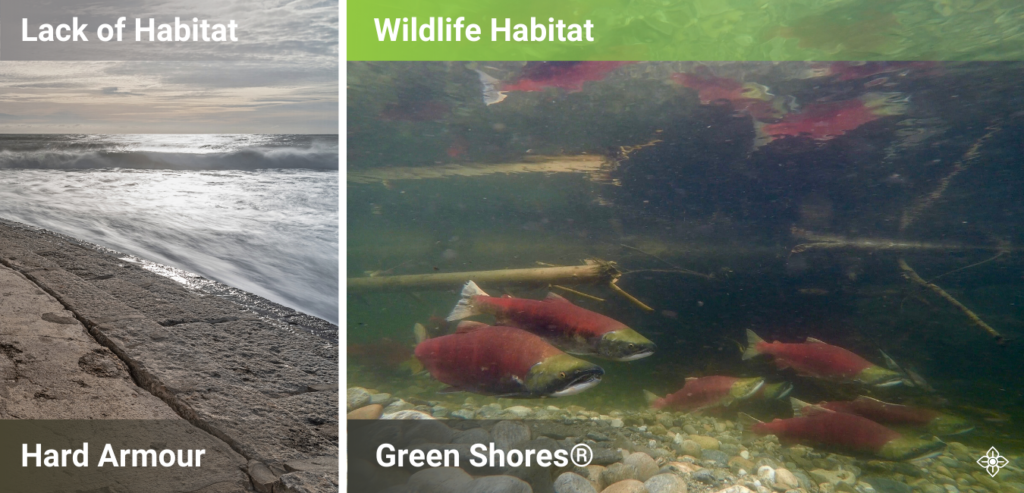
Natural and beautiful
Green Shores enhances the natural beauty of shorelines by using native vegetation that thrives with local conditions, providing opportunities to view wildlife, and providing access to waterfront shorelines and activities.
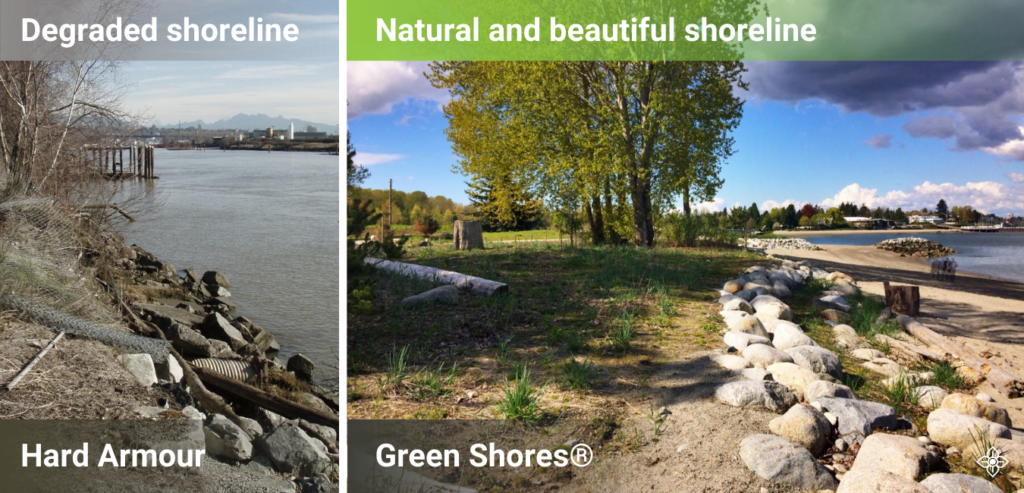
Source: Hard armour – Riverbend Park – pre-Green Shores for Shoreline Development project. Green Shores design – Jericho Beach Park, Green Shores for Shoreline Development.
Water quality
Green Shores improves local water quality by reducing stormwater runoff. The native shoreline vegetation encouraged by Green Shores uses an associated network of branches, trunks, stems, and roots to filter upland runoff and enhance infiltration and retention of rainwater.
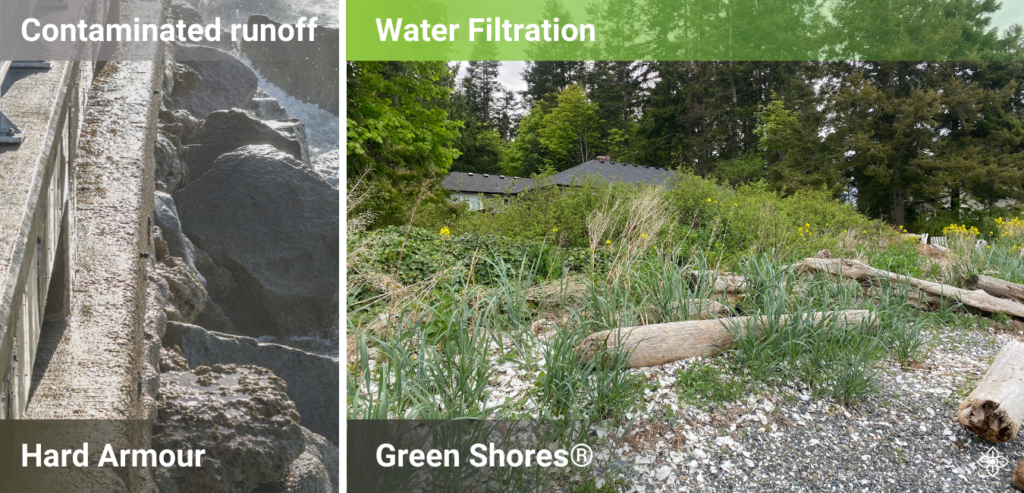
Source: Green Shores photo by Kelly Loch; Gartley Beach, Comox Valley Regional District.
Consider a nature-based Green Shores approach for your shoreline. Visit Stewardship Centre for BC’s Green Shores website to learn more about the program, training, BC-based projects and more!





